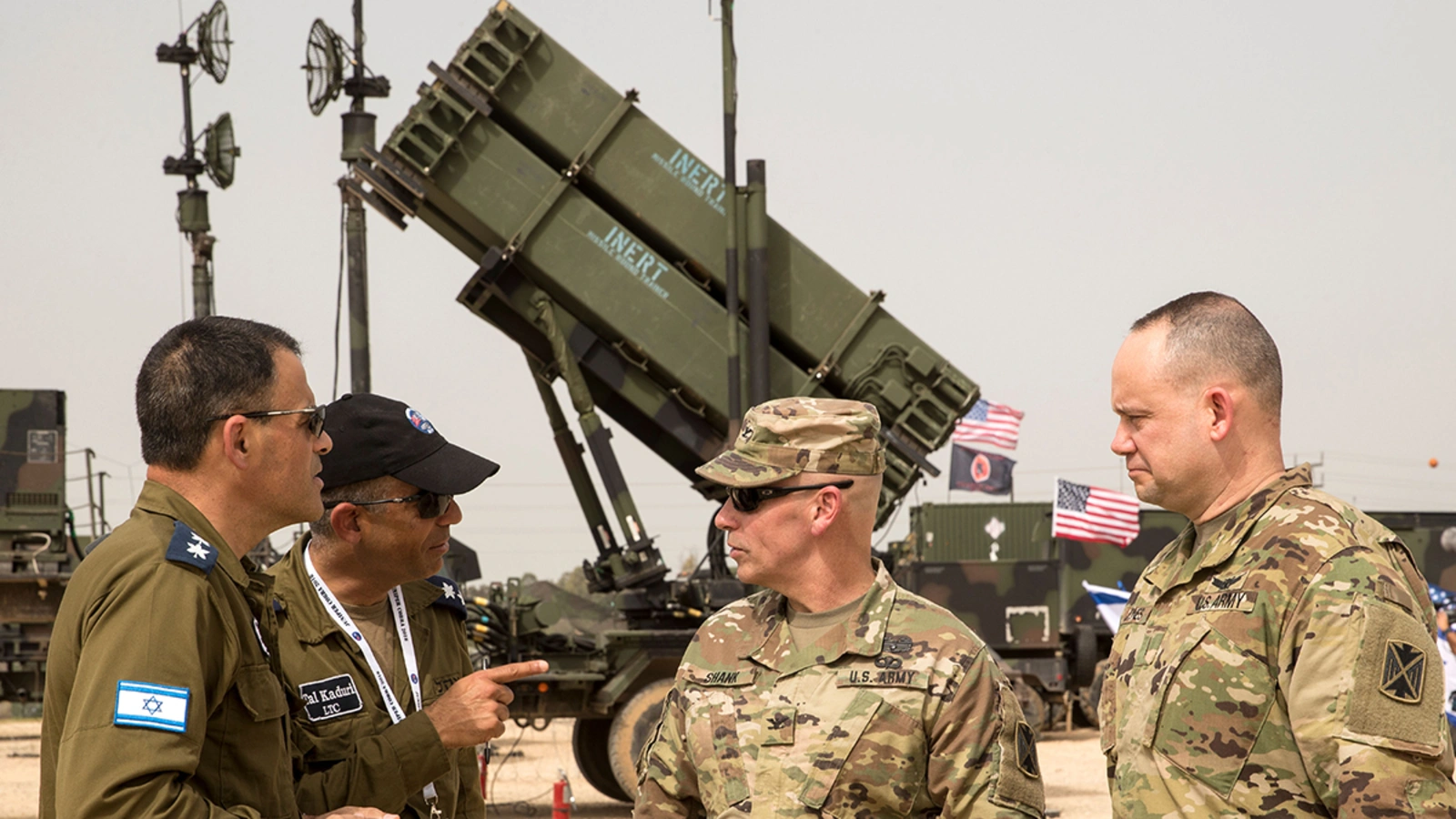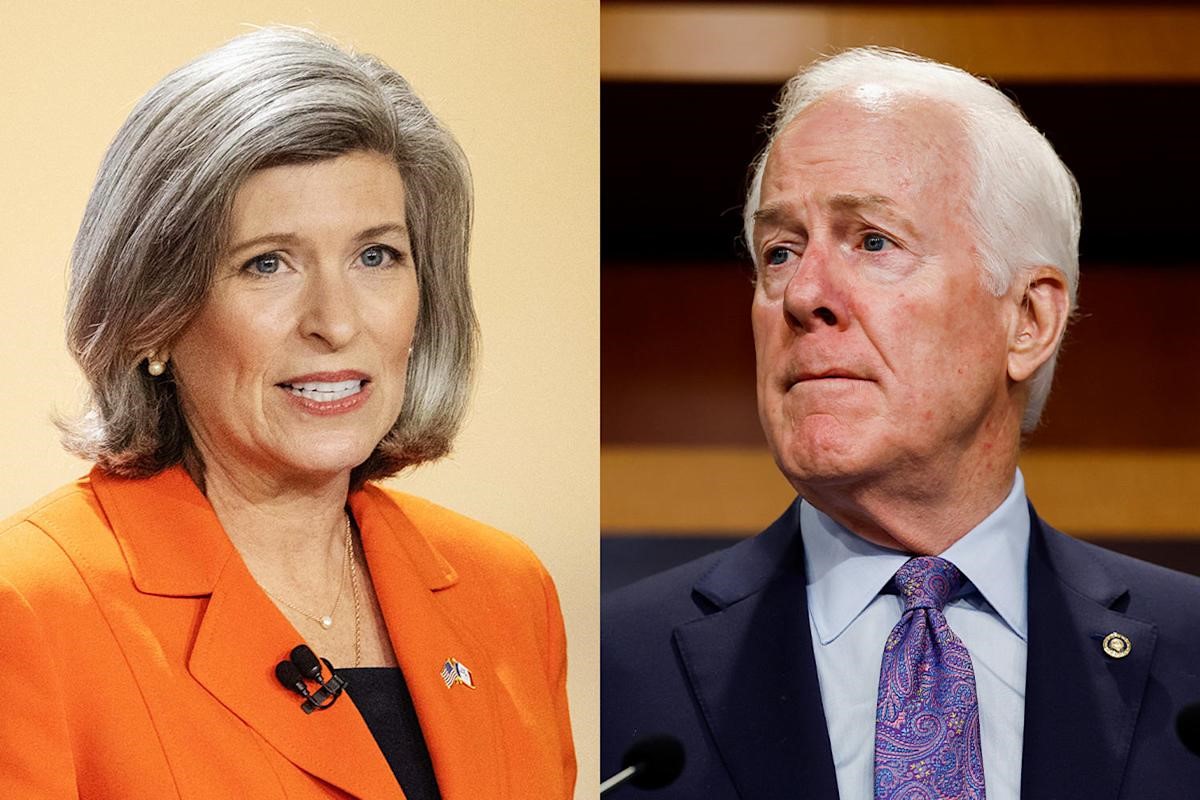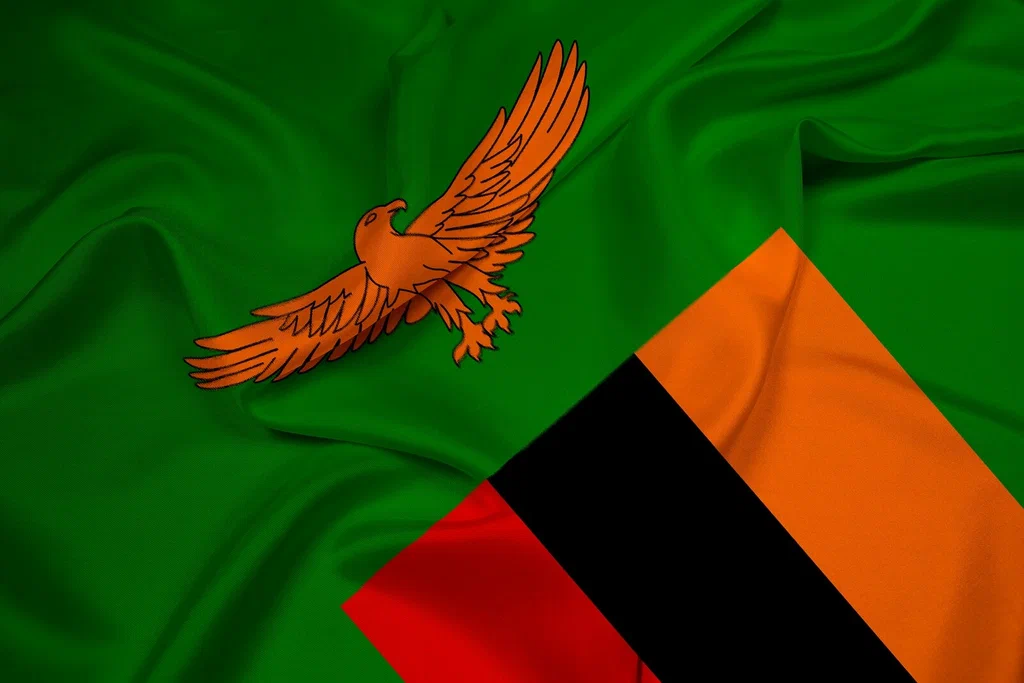Politics
Impact of Israel‑Hamas and Ukraine Crises on US Defense Sector

Introduction
The world is currently witnessing two major conflicts that are testing the capabilities of the US defense sector: the Israel‑Hamas war and the crisis in Ukraine. These simultaneous crises have put immense strain on the industry, which is already grappling with supply chain disruptions, staffing shortages, and rising costs. In this article, we delve into the impact these conflicts have on America’s defense manufacturers and contractors. We will examine how stretched resources affect national security, defense budgets, and the ability of the sector to respond effectively to urgent needs.
The Dual Conflicts: A Brief Overview
1. Israel‑Hamas War
In October 2023, violence escalated dramatically between Israel and the Palestinian group Hamas in Gaza. Rocket barrages, airstrikes, and ground operations drew in international attention. The US quickly provided military aid—precision munitions, interceptors for Israel’s Iron Dome system, and intelligence support—to help defend civilian areas.
2. Ukraine Crisis
Since Russia’s full‑scale invasion of Ukraine in February 2022, the US has supplied Kyiv with advanced weaponry, including anti‑tank missiles, drones, and air defense systems. This aid has been crucial in slowing Russian advances and protecting Ukrainian civilians.
Both conflicts demand high volumes of advanced equipment and ammunition, testing US military production capacity like never before.
Rise of the Impact on the U.S. Defense Sector
Since the Israel‑Hamas fighting and the war in Ukraine escalated, U.S. defense companies have seen a surge in demand. In mid‑July 2025, a major arms deal announced by the White House and NATO allies included billions in Patriot missiles and air defenses for Ukraine, funded by NATO members but built in the U.S. At the same time, continuing U.S. military aid to Israel keeps battle‑tested equipment moving off factory floors and into the field. These combined crises have pushed more orders and planning work into key defense firms.
Benefits for the U.S. Defense Industry
Higher international tensions have driven record budgets and fuller order books for U.S. contractors. The Pentagon’s fiscal 2026 plan tops $1 trillion—up 13% from the year before—fueling growth at companies like Lockheed Martin, Northrop Grumman, and Raytheon Technologies. This boost creates thousands of jobs in engineering, manufacturing, and maintenance. It also accelerates research into next‑generation weapons, ensuring that U.S. firms stay at the cutting edge.
Role of the Defense Sector in Global Security
U.S. defense firms serve as the backbone of allied support and deterrence. In Ukraine, American‑made systems—like HIMARS rocket launchers and precision‑guided munitions—have proven critical on the battlefield. In Israel, advanced air‑defense radars and interceptors help protect civilian centers from rocket threats. Beyond supplying gear, U.S. contractors often embed technicians overseas, train local forces, and share maintenance know‑how. These roles turn factories and labs in the U.S. into pillars of allied resilience
Increased Demand and Production Pressures
1. Surge in Orders
Defense contractors saw a surge in orders for everything from artillery shells to guided missiles. Companies such as Lockheed Martin and Raytheon received additional contracts to supply Iron Dome interceptors and Javelin anti‑tank missiles.
2. Lead Times and Backlogs
With new contracts arriving weekly, factories have struggled to meet delivery dates. Lead times for critical components—electronics, specialized steel, and semiconductors—have stretched from months to over a year. Backlogs in missile production now exceed pre‑pandemic levels, delaying replacement stock for both allies and the US military itself.
Supply Chain Disruptions
1. Rare Earth Elements and Specialty Metals
Many advanced weapons rely on rare earth elements like neodymium for powerful magnets, or specialized alloys for missile casings. Most of these materials come from a handful of global suppliers. Ongoing trade tensions and logistical bottlenecks have disrupted deliveries, forcing US firms to seek new sources or develop domestic recycling programs.
2. Electronics and Microchips
Modern defense systems require high‑end microchips. Global shortages that began in 2020 continue to hamper production lines, as civilian chip makers prioritize consumer electronics. Pentagon officials have pressured chip manufacturers to allocate more capacity to defense needs, but building new fabs takes years and billions of dollars.
Workforce Challenges

Image by: Yandex.com
Despite strong demand, the defense sector grapples with rising costs and strained supply chains. Key components—such as microchips and specialized alloys—face global bottlenecks. Aging production lines must be upgraded even as new systems roll out, stretching both workforce and budgets. Political debates over aid packages can delay contracts or shift priorities at the last minute. Meanwhile, Russia’s own defense spending jumped to over $150 billion in 2025, adding pressure on U.S. planners to match evolving threats
1. Skilled Labor Shortages
Building complex weapons systems demands skilled technicians, engineers, and machinists. However, the US defense sector faces a wave of retirements and a slow pipeline of new talent. Vocational training programs have not kept pace, leaving some facilities understaffed.
2. Security Clearances
Many defense jobs require security clearances, which can take six months or more to process. As demand rises, the backlog of clearance applications lengthens, delaying hiring and onboarding of critical personnel.
Budgetary Strain and Congressional Support
1. Supplemental Funding
Congress passed supplemental aid packages for Israel and Ukraine, adding tens of billions to defense spending outside the annual budget. While this funding supports allies directly, it also diverts resources from scheduled Pentagon procurement programs.
2. Fiscal Year Trade‑Offs
To cover emergency aid, lawmakers face tough choices in the regular defense budget. Programs like shipbuilding or next‑generation fighter jets may see cuts or delays. Pentagon leaders warn that under‑funding long‑term projects could weaken future capabilities.
National Security Implications
1. Readiness Concerns
U.S. forces must remain ready to respond to crises globally. If production is focused on supplying allies, stockpiles for the U.S. military can shrink. Readiness levels for munitions and air defense systems risk dipping below optimal levels.
2. Global Deterrence
A strong U.S. defense sector underpins global deterrence. Adversaries monitor America’s ability to equip not just its forces but also allied armies. Persistent production shortfalls could embolden hostile powers to test U.S. resolve.
Industry Adaptations and Innovations
1. Expanding Production Capacity
In response, the Department of Defense is investing in expanding existing plants and building new ones. Public‑private partnerships help share costs and speed up construction. For example, new missile‑component factories are slated to open in the next two years.
2. Embracing Automation
To offset labor shortages, contractors are turning to automation and robotics. Automated machining centers and AI‑driven quality control systems boost output while maintaining precision.
3. Supply Chain Resilience
Defense firms are diversifying suppliers, sourcing rare earth elements from allied nations, and investing in domestic mining. Recycling programs collect end‑of‑life electronics to recover precious metals.
What Investors and Policymakers Should Watch
1. Key Indicators
- Backlog Metrics: Rising backlogs signal production stress but also future revenue.
- Lead Times: Shorter lead times reflect supply chain improvement; longer times warn of bottlenecks.
- Funding Approvals: Watch for additional defense supplements and budget negotiations in Congress.
2. Policy Actions
- Workforce Development: Funding for technical schools and fast‑track clearance processes can alleviate labor constraints.
- Strategic Stockpiles: Rebuilding U.S. military stockpiles while supporting allies ensures readiness.
- Research & Development: Continued R&D funding for next‑gen systems prevents capability gaps.
The Road Ahead
As the Israel‑Hamas war and Ukraine crisis continue to evolve, the US defense sector remains under pressure. Yet, through targeted investments in capacity, automation, and workforce training, the industry can adapt. Maintaining a balance between supporting allies and preserving U.S. readiness is critical. Policymakers must consider both immediate needs and long‑term strategic goals to ensure America’s defense capabilities remain strong.
Looking ahead, U.S. defense firms will lean further into unmanned systems, artificial‑intelligence tools, and software‑driven weapons. The success of small drones in Ukraine and AI targeting in the Middle East points to a shift away from only big-ticket hardware. Industry leaders are also exploring cleaner, more efficient platforms to meet both military needs and climate goals. As allied nations pledge to spend more on defense, U.S. companies that adapt quickly—offering lighter, smarter, and more sustainable solutions—will remain central to global security.
Conclusion
The simultaneous shocks of the Israel‑Hamas war and Ukraine crisis have stretched the US defense sector to its limits. Surging demand, supply chain snags, workforce gaps, and budgetary trade‑offs pose real challenges for national security and industry health. However, through expanded production, automation, and resilient supply strategies, American defense firms are finding ways to respond effectively. As investors and policymakers watch backlogs, lead times, and funding decisions, one truth stands clear: supporting our allies and sustaining U.S. readiness go hand in hand. With thoughtful policy and innovative industry efforts, the defense sector can meet today’s urgent demands while building strength for tomorrow’s challenges.
Business
Grow Your Brand Using Top Guest Posting Sites

Introduction
Using trusted is one of the most powerful methods to gain visibility in the UAE digital landscape. When you publish on premium portals like Arabian Business, your brand gains credibility, drives quality traffic, and boosts SEO. Effective Link Building Services play a vital role in ensuring every post delivers measurable results for both Guest Post Technology and Guest Post Health niches. By selecting the right Guest Posting Sites, companies of all sizes can tap into large audiences and strengthen their digital presence.
What Is Guest Posting?
Guest posting is when you write content that gets published on someone else’s blog or website. In return, you often get credit as the author and can include a link back to your own website or social media. This is a great way to reach readers who may never have heard of you before.
Guest posting works well for both sides. The website owner gets quality content to share with their readers, and you get exposure, traffic, and sometimes even better search rankings.
Why Guest Posting Helps Grow Your Brand
Guest posting is one of the most effective ways to build your brand online. Here’s why it works so well:
1. Increases Brand Visibility
When your article is published on another website, your name and business are introduced to new people. If they like your content, they’ll remember you and maybe even look you up.
2. Builds Credibility and Trust
Writing for well-known websites makes you look like an expert. People are more likely to trust you if they see your content on trusted platforms.
3. Drives Quality Traffic
A good guest post usually includes a link to your website. Readers who click that link are often interested in what you offer, so the traffic you get is targeted and valuable.
4. Improves SEO
Search engines like Google see links from other websites as a sign that your site is trustworthy. These links, called backlinks, can help improve your rankings in search results.
5. Connects You with Industry Leaders
Guest posting can also help you build relationships with other bloggers and website owners. These connections can lead to new opportunities and long-term partnerships.
Benefits of Guest Posting Sites for Strong Brand Authority
High-DA allow you to showcase expertise and build trust with targeted audiences. Through strategic Link Building Services, each article earns valuable backlinks that strengthen your online presence. Whether your focus is Guest Post Technology updates or Guest Post Health awareness campaigns, these platforms help you stand out in a competitive market. Businesses looking for long-term growth consistently rely on these Guest Posting Sites to generate leads and enhance brand authority.
How Link Building Services Power UAE Guest Posting Sites
Professional Link Building Services connect your content with reputable Guest Posting Sites, ensuring lasting SEO benefits. A carefully designed campaign that integrates Guest Post Technology and Guest Post Health topics improves ranking on search engines and drives organic traffic. The synergy between Link Building Services and Guest Posting Sites means every published article is optimized to perform, delivering measurable ROI for your marketing investment.
Why UAE Businesses Prefer Premium Guest Posting Sites
Brands aiming for growth choose Guest Posting Sites like Arabian Business because they deliver high engagement and domain authority. With dedicated Link Building Services, every Guest Post Technology or Guest Post Health feature strengthens brand identity and search engine performance. Companies in industries ranging from finance to healthcare leverage these premium Guest Posting Sites to connect with audiences who value credibility and professional content.
Crafting Quality Content for Guest Posting Sites
Content tailored for Guest Posting Sites must be informative, keyword-optimized, and valuable to readers. Integrating professional Link Building Services ensures that each Guest Post Technology article and Guest Post Health story gains relevant backlinks for sustainable traffic. Compelling storytelling, factual accuracy, and audience-focused insights make your content more shareable and impactful on Guest Posting Sites.
Guest Posting Sites Drive Organic SEO with Link Building Services
Organic rankings improve when you leverage Guest Posting Sites combined with effective Whether you write about emerging Guest Post Technology trends or the latest Guest Post Health research, these strategies build long-term authority. The relationship between Guest Posting Sites and Link Building Services ensures your content not only reaches new readers but also boosts your website’s domain authority.
Expanding Audience Reach through Guest Posting Sites
Strategic Link Building Services amplify the reach of your Guest Post Technology and Guest Post Health content. By using authoritative Guest Posting Sites, you connect with new markets, attract qualified leads, and enhance brand visibility across the UAE. Consistent publication across multiple Guest Posting Sites keeps your brand at the forefront of industry conversations and builds trust among potential clients.
Role of Guest Posting Sites in Digital PR Campaigns
Modern PR campaigns rely heavily on Guest Posting Sites. Incorporating advanced Link Building Services ensures every Guest Post Technology or Guest Post Health article resonates with readers and search engines, strengthening overall digital reputation. Companies seeking strong digital PR results view Guest Posting Sites as essential tools for expanding media coverage and attracting organic mentions.
Measuring Success of Guest Posting Sites with Analytics
To evaluate the impact of Guest Posting Sites, track metrics like organic traffic, backlinks, and conversions. Expert Link Building Services help interpret these insights, ensuring your Guest Post Technology and Guest Post Health posts consistently deliver value. Analytics reveal which Guest Posting Sites generate the highest ROI, allowing you to refine strategy and focus on the most productive partnerships.
Best Practices for UAE-Focused Guest Posting Sites
Maintain relevance and authority by choosing Guest Posting Sites that align with your brand goals. Use professional Link Building Services to craft engaging Guest Post Technology and Guest Post Health content that meets local audience interests. Tailoring your approach to UAE trends—such as sustainability, fintech, and health innovations—makes your contributions more appealing on these high-authority Guest Posting Sites.
Scaling Your Strategy with Multiple Guest Posting Sites
Diversifying across various Guest Posting Sites expands exposure and builds powerful backlink profiles. Effective Link Building Services guarantee that and Guest Post Health articles remain discoverable and influential. Collaborating with several Guest Posting Sites also mitigates risk, ensuring consistent brand visibility even if one platform changes its policies.
Future of SEO with Guest Posting Sites and Link Building Services
The combination of high-quality Guest Posting Sites and innovative Link Building Services will shape the future of digital marketing. Publishing compelling Guest Post Technology insights and Guest Post Health updates ensures sustained growth. As search algorithms evolve, authoritative Guest Posting Sites will remain critical for building trust, while expert Link Building Services will help maintain top rankings in a competitive market.
Final Thoughts on Leveraging Guest Posting Sites
Investing in reputable Guest Posting Sites supported by strategic Link Building Services is no longer optional—it’s essential. Whether you focus on Guest Post Technology innovations or crucial Guest Post Health developments, consistent publishing on premium UAE platforms like Arabian Business secures your brand’s digital future. By integrating strong Link Building Services and high-value Guest Posting Sites, businesses of all types can achieve unmatched online authority and audience engagement.
Politics
Some California Incumbents Lagging in Fundraising Report
At vero eos et accusamus et iusto odio dignissimos ducimus qui blanditiis praesentium voluptatum deleniti atque corrupti.

Introduction
The first half of 2025 has come and gone, and so have the latest Federal Election Commission (FEC) quarterly filings. Published on July 15, the Q2 FEC report covers campaign activity from April 1 through June 30. It provides a clear window into next year’s midterm landscape. While many incumbents posted strong numbers, some California incumbents lagging in fundraising have raised eyebrows. In safe districts, sitting members often take donor support for granted—until a well‑funded challenger appears. In this article, we highlight the incumbents who saw lower‑than‑expected haul, explore the reasons behind their shortfalls, and consider what it means for California’s key House races moving forward.
A Look at the Q2 2025 Fundraising Landscape
Overall, incumbents nationwide continued to outraise challengers, a trend noted by POLITICO in its analysis of Q2 filings. Across the most competitive House districts, the median Republican incumbent raised $860,000 last quarter, compared to $689,000 for targeted Democratic incumbents. These figures underscore an uphill battle for under‑funded lawmakers, especially in battleground states like California.
But averages hide extremes. While heavy‑hitting names like Nancy Pelosi and Adam Schiff topped $2 million in Q2, several California incumbents trailed far behind the median.
- Julia Brownley (CA‑26): $155,735 raised; cash on hand $1.03 million.
- Judy Chu (CA‑28): $64,020 raised; cash on hand $3.5 million.
- Luz Rivas (CA‑29): $41,352 raised; cash on hand $196,352.
- Sara Jacobs (CA‑51): $80,978 raised; cash on hand $46,235.
- Juan Vargas (CA‑52): $167,256 raised; cash on hand $192,712.
By comparison, more competitive districts like CA‑27 saw George Whitesides raise $758,846 last quarter, with $866,611 in reserve. These gaps spotlight potentially vulnerable incumbents in what may look like “safe” seats.
Who’s Falling Behind—and Why?
1. Julia Brownley (CA‑26)
Representing Ventura and Thousand Oaks since 2013, Brownley raised just $155,735 in Q2. While she reported over $1 million on hand, her low receipts suggest limited new donor enthusiasm. Brownley cites no major primary or general‑election challenger—but history shows that quiet fund‑drives often precede surprise bids.
2. Judy Chu (CA‑28)
Long‑time Orange County Democrat Judy Chu secured just $64,020 over three months, one of the lowest totals among California’s 45 House members. Yet Chu’s hefty $3.5 million cash cushion insulates her from immediate pressure. Still, her Q2 haul ranks among the bottom five statewide.
3. Luz Rivas (CA‑29)
A freshman in Congress, Rivas posted $41,352 in new funds, while spending $109,263—leaving her with $196,352 cash on hand. District 29 voted nearly 70% for her in 2024, but her limited fundraising could signal growing frustration or an under‑resourced campaign team.
4. Sara Jacobs (CA‑51)
Jacobs, who flipped her San Diego‑area seat in 2020, raised $80,978 but spent $112,115, leaving scant $46,235 on hand. With veterans like Juan Vargas nearby also underperforming, Democrats face potential fights in Southern California suburbs.
5. Juan Vargas (CA‑52)
Vargas’s $167,256 haul is modest, given his southwest San Diego seat’s $2.1 million cash reserve. While Vargas doesn’t face a known challenger yet, his low fundraising growth may invite GOP and independent bids, especially after redistricting shifts the district’s dynamics.
The Forces at Play
Several factors explain why incumbents lag in raising fresh money:
- Safe Seats Breed Complacency: Lawmakers in heavily one‑party districts often lower their fundraising tempo, assuming minimal challenge.
- Resource Allocation: Front‑line troops get more attention. Parties and PACs channel money into districts viewed as toss‑ups, leaving true blue or red seats with less cash.
- Donor Fatigue: Long‑serving incumbents sometimes lose the novelty needed to excite small‑dollar contributors.
- Early Retirement Decisions: As Roll Call noted, poor Q2 fundraising can presage retirement announcements. Some incumbents might quietly test the waters before deciding their futures.
- Campaign Strategy Differences: Some offices rely on grants from leadership PACs or joint committees, which may not reflect on personal candidate reports.
These dynamics converge in California, where gerrymandered lines create numerous safe seats, and the state’s deep bench of Democratic talent demands hard choices from donors.
Consequences for California’s Midterm Map
For under‑funded incumbents, limited receipts pose real risks:
- Empowering Challengers: Cash‑poor incumbents can be targets for emerging challengers who can fundraise aggressively, even with small margins. Recent examples include Jessica Morse’s $300,000 haul against Rep. Doris Matsui in 2024.
- National Party Pressure: House Democratic and GOP campaign committees may pressure struggling incumbents to prove viability or step aside for stronger candidates.
- Primary Vulnerability: Generational handoffs become possible when younger contenders see an incumbent’s weak war chest.
- Reduced Field Operations: Less money means fewer staff, ads, and outreach—key deficits in tight races.
California’s 2026 cycle could hinge on a few surprise primaries or general contests if incumbents can’t ramp up fundraising.
Expert Takeaways
Jessica Piper, at Politico, warns that incumbents with sub‑par Q2 numbers should “sense the alarm bells ringing”. Meanwhile, CQ Roll Call’s Nathan Gonzales has noted that low second‑quarter hauls often lead to retirement decisions before Q4 filings. With just a year until 2026, California incumbents must secure both small‑dollar donors and institutional backers to silence any chatter about stepping down.
What Incumbents Can Do Now
To reverse lagging trends, incumbents should:
- Ramp Up Fundraising Events: Host grassroots gatherings and virtual town halls to energize supporters.
- Leverage Joint PACs: Tap into leadership and joint fundraising committees to boost receipts.
- Engage Small Donors: Use social media appeals and peer‑to‑peer texting to grow a donor base under $200.
- Highlight Achievements: Use constituent newsletters to remind voters of key wins and local impact.
- Scout for Endorsements: Seek high‑profile endorsements to draw media attention and donor confidence.
Active efforts now can transform Q2 under‑performance into Q3 momentum.
Looking Ahead: The Road to 2026
Fundraising doesn’t determine elections—votes do—but it sets the stage. As candidates prepare for the 2026 cycle, Q2’s lagging figures serve as a warning: complacency is costly, even in safe districts. The next filing deadline—Q3 reports due October 15—will test whether incumbents can adapt. Those who shore up support will maintain party backing; those who falter risk primary challenges or early retirements. California’s sprawling House delegation may see its first major shake‑up in years, and the incumbents who act now can secure their spots at the table.
Conclusion
The Q2 2025 fundraising report paints a mixed picture for California’s House delegation. While high‑profile lawmakers continue to amass millions, some incumbents lagging in fundraising face fresh scrutiny. Julia Brownley, Judy Chu, Luz Rivas, Sara Jacobs, and Juan Vargas reported lower third‑quarter hauls, raising concerns about resources and challenger opportunities. Safe‑seat dynamics, donor fatigue, and strategic party decisions explain their shortfalls—but the clock is ticking. With another filing deadline looming in October, these incumbents must rev up fundraising, engage small donors, and demonstrate vitality to avoid retirement chatter and ward off challengers. California’s midterm map may hinge on whether these lawmakers can turn under‑performance into a late‑cycle rally. Their next moves will tell us much about the future of the Golden State’s representation in Congress.
Politics
Zambia’s 2026 Election: Vote for Zambia

Introduction
The Zambia 2026 election is set to shape the country’s path for years to come. On August 13, 2026, Zambians will head to the polls to choose their next president, National Assembly members, and local council leaders. Every vote counts, and understanding the process, key players, and pressing national issues is vital. This article offers an easy-to-follow guide on why you should vote for Zambia, what the Zambian general election entails, and how you can make your voice heard. Let’s dive into the facts, dates, and strategies to ensure you’re ready on election day.
Make Pre Vote for Zambia : Vote Here
As Zambia approaches its 2026 general elections scheduled for August 13, the political landscape is marked by legal battles, shifting alliances, and debates over electoral reforms. The contest between incumbent President Hakainde Hichilema and former President Edgar Lungu has intensified, setting the stage for a pivotal moment in the nation’s democratic journey.
Leading Parties and Candidates
1. United Party for National Development (UPND)
Leader: Hakainde Hichilema
Political Position: Centre-left
Founded: 1998
Current Status: Ruling party
The United Party for National Development (UPND) is the current ruling party in Zambia. Led by President Hakainde Hichilema, who came into power in 2021 after several previous electoral attempts, the UPND is known for its strong emphasis on economic reform, anti-corruption, and human rights.
Under Hichilema’s leadership, the UPND has focused on stabilizing Zambia’s economy, attracting foreign investment, and increasing transparency in governance. The party’s pro-market stance combined with a social democratic approach appeals to both urban professionals and rural voters.
The UPND has a stronghold in Southern Province and is expanding its influence nationwide. As the ruling party, UPND will likely be the focal point of both support and criticism in the upcoming election.
2. Patriotic Front (PF)
Leader: Transitional leadership following Edgar Lungu
Political Position: Centre-right
Founded: 2001
Current Status: Main opposition party
The Patriotic Front (PF) is the primary opposition party in Zambia. Founded by Michael Sata and later led by Edgar Lungu, PF governed Zambia from 2011 until its defeat in the 2021 elections.
While in power, the PF was known for its infrastructure development projects, particularly in road construction and urban development. However, its tenure was also marked by increasing debt levels, allegations of corruption, and democratic backsliding.
Since 2021, the PF has been undergoing internal restructuring, with various factions debating the future direction and leadership of the party. Despite these challenges, the PF remains a major political force, especially in Lusaka, the Copperbelt, and parts of the northern region.
3. Socialist Party (SP)
Leader: Dr. Fred M’membe
Political Position: Left-wing
Founded: 2018
Current Status: Emerging party
The Socialist Party is a relatively new but fast-growing political force in Zambia. Founded by veteran journalist and former Post newspaper editor Fred M’membe, the SP positions itself as a party of the working class, advocating for social justice, wealth redistribution, and public ownership of essential services.
The SP has gained popularity, particularly among students, trade unions, and rural communities disillusioned by both the UPND and PF. The party’s strong ideological stance differentiates it from other political actors and makes it a voice for those calling for a more radical transformation of Zambian society.
Although it did not win seats in the 2021 general elections, the Socialist Party is fielding more candidates in local and national elections and could become a significant player in 2025.
4. Democratic Party (DP)
Leader: Judith Kabemba (as of recent internal changes)
Political Position: Centrist
Founded: 1991 (revived in recent years)
Current Status: Minor but notable party
The Democratic Party has had a turbulent journey in Zambian politics. Originally formed in the early 1990s, the party has gone through several revivals, the most recent of which brought it into the spotlight under the former leadership of Harry Kalaba. However, internal conflicts and legal battles over leadership have caused a shift, with Judith Kabemba emerging as a notable figure.
The DP promotes a centrist agenda with a focus on good governance, national unity, and economic diversification. While it currently lacks a broad national support base, the party’s appeal to moderate voters and its clean image make it a party to watch in 2025.
5. Forum for Democracy and Development (FDD)
Leader: Edith Nawakwi
Political Position: Centre-left
Founded: 2001
Current Status: Long-standing opposition party
The Forum for Democracy and Development (FDD) is one of Zambia’s older opposition parties. Founded by former members of the Movement for Multi-Party Democracy (MMD), the FDD has been a consistent participant in Zambia’s democratic process, though its electoral performance has diminished over the years.
Led by Edith Nawakwi, the first woman to run for president in Zambia, the party emphasizes women’s empowerment, constitutional reform, and economic justice. While it has struggled to secure seats in recent elections, FDD continues to campaign on a platform of strong institutional change and remains a respected voice in civil society.
The Constitutional Court’s Ruling on Lungu’s Eligibility
In December 2024, Zambia’s Constitutional Court ruled that former President Edgar Lungu is ineligible to run in the 2026 presidential election, citing constitutional limits on presidential terms. Lungu, who served from 2015 to 2021, has contested this decision, alleging political interference and vowing to continue his political activities.
1. Formation of the Tonse Alliance
In response to the court’s ruling, Lungu has aligned with the newly formed Tonse Alliance, a coalition of opposition parties aiming to challenge the ruling United Party for National Development (UPND) in the upcoming elections. Despite legal challenges, the alliance has positioned Lungu as its presidential candidate, reflecting internal divisions within the opposition and a determination to contest the 2026 elections.
2. Electoral Reforms and Concerns
The Electoral Commission of Zambia (ECZ) has proposed reforms for the 2026 elections, including extending the deadline for announcing presidential results by four days. While intended to address legal gaps, these changes have raised concerns about potential delays and their impact on public trust in the electoral process.
3. Political Endorsements and Alliances
President Hakainde Hichilema has received endorsements from key political figures, including former Vice-President Enoch Kavindele, who praised Hichilema’s leadership and economic reforms. These endorsements strengthen Hichilema’s position as he seeks re-election.
4. Legal Challenges and Political Tensions
The Patriots for Economic Progress (PEP) has announced plans to challenge the Constitutional Court’s ruling barring Lungu from the 2026 elections, arguing that it infringes on democratic principles. This legal battle underscores the heightened political tensions and the contentious nature of the upcoming elections.
Conclusion: A Critical Moment for Zambia’s Democracy
Zambia’s 2026 general elections are shaping up to be a defining moment in the nation’s political history. With legal disputes, shifting alliances, and proposed electoral reforms, the path to the elections is fraught with challenges. As the nation prepares to vote, the commitment to democratic principles and the integrity of the electoral process will be under close scrutiny.
As Zambia heads toward another critical election, citizens are preparing to make informed choices that will shape the nation’s future. The importance of understanding the leading political parties, their ideologies, and their leadership cannot be overstated. This blog highlights the top five political parties currently shaping Zambia’s political landscape, providing voters with a clearer picture ahead of the 2025 elections.
-
Business2 years ago
Cybersecurity Consulting Company SequelNet Provides Critical IT Support Services to Medical Billing Firm, Medical Optimum
-
Business2 years ago
Team Communication Software Transforms Operations at Finance Innovate
-
Business3 years ago
Project Management Tool Transforms Long Island Business
-
Business2 years ago
How Alleviate Poverty Utilized IPPBX’s All-in-One Solution to Transform Lives in New York City
-
health3 years ago
Breast Cancer: The Imperative Role of Mammograms in Screening and Early Detection
-
Sports3 years ago
Unstoppable Collaboration: D.C.’s Citi Open and Silicon Valley Classic Unite to Propel Women’s Tennis to New Heights
-
Art /Entertainment3 years ago
Embracing Renewal: Sizdabedar Celebrations Unite Iranians in New York’s Eisenhower Park
-
Finance3 years ago
The Benefits of Starting a Side Hustle for Financial Freedom































